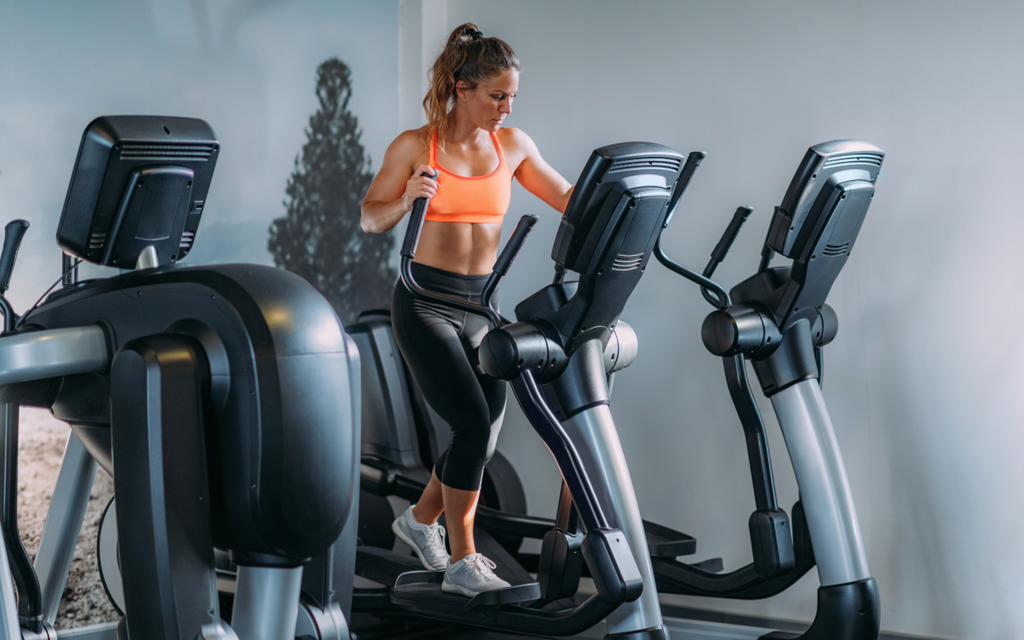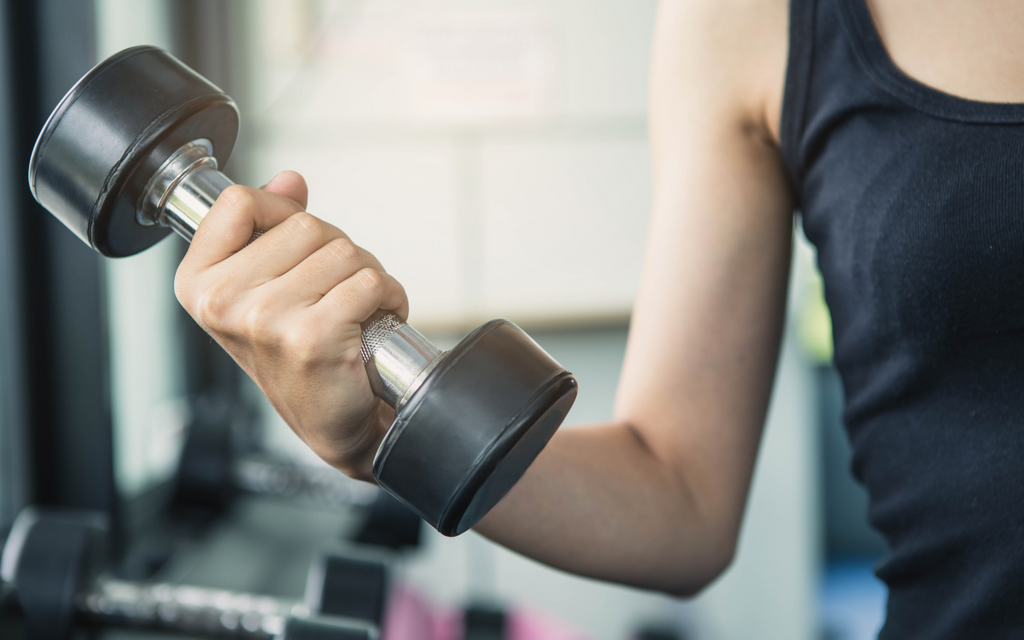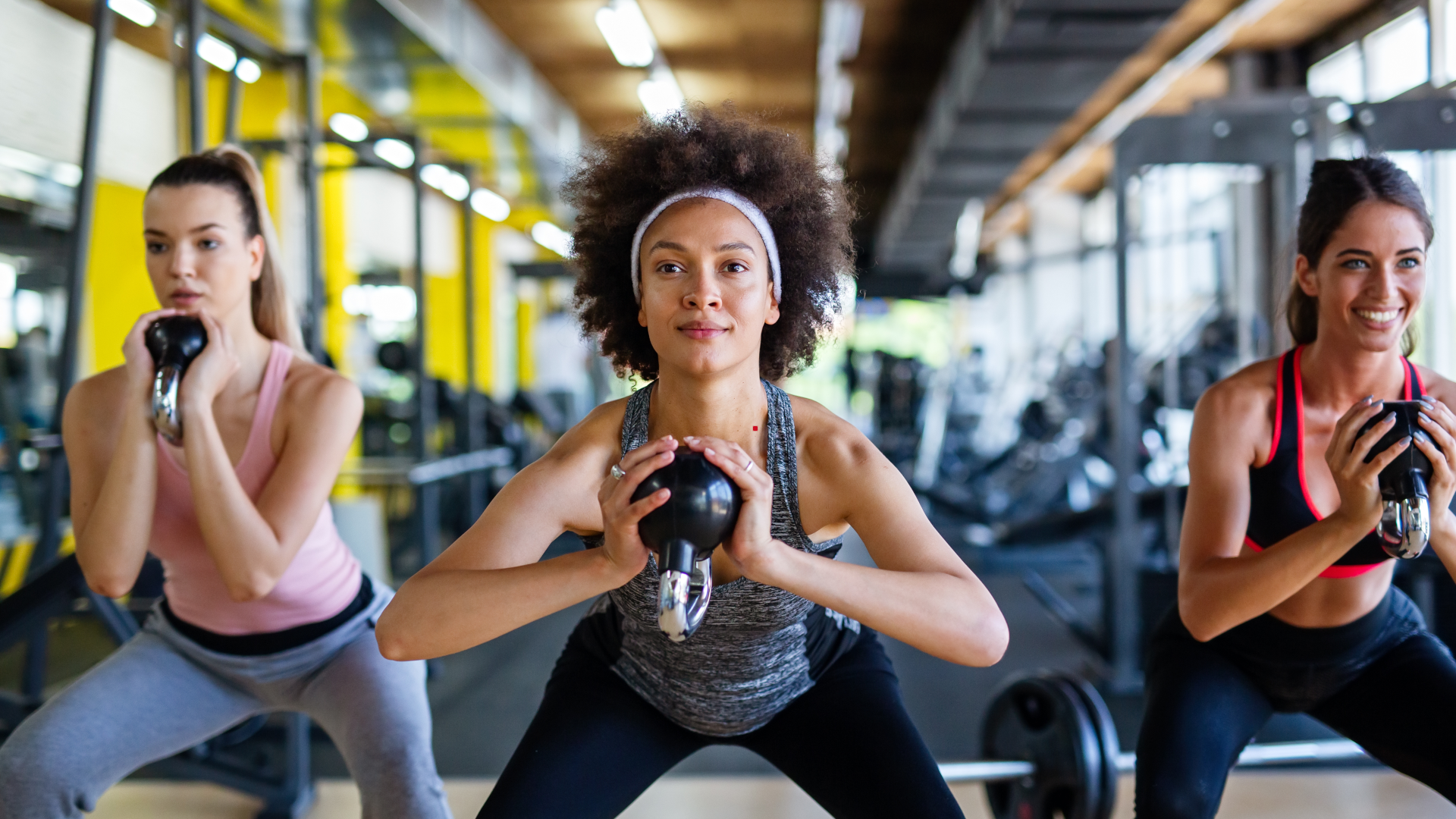Things you'll learn here... |
Are you unsure of whether you should be incorporating more cardio or weight training into your workout routine to lose weight? Don’t worry, you’re not alone.
Figuring out your exact workout routine when your aim is to lose weight can be difficult. Cardio (short for cardiovascular exercise) is a go-to exercise for most, when choosing an exercise to get the heart rate pumping and shed pounds.
But, do you know the benefits of using weights and strength training to lose weight?
Here, we’ll deep dive into the benefits of cardio and weight training, while also looking at their downsides. By the end, you will know how cardio and weight training differs, from the types of exercises you can do and how to effectively burn calories.
We’re here to help you make an informed decision about how to train to reach your overall health and fitness goals. Are you ready to find out which works best – cardio or strength training with weights?
Let’s go!
Which cardio exercises are best for weight loss?

Cardio exercises are effective for weight loss, as they help increase heart rate and burn calories. Here are some of the best cardio exercises for weight loss:
Running
Running is a high-intensity cardio exercise that can burn a significant number of calories in a relatively short amount of time. It also strengthens the lower body muscles and improves cardiovascular health.
Cycling
Cycling is an excellent low-impact cardio exercise that can help burn calories and improve lower body strength and endurance.
Swimming
Swimming is a full-body workout that engages multiple muscle groups while providing a low-impact cardio workout. It's particularly beneficial for individuals with joint issues or injuries.
Jumping rope
Jumping rope is a simple yet effective cardio exercise that can be done virtually anywhere. It burns a high number of calories while also improving coordination and agility.
High-intensity interval training (HIIT)
HIIT involves short bursts of intense exercise followed by brief rest periods. It's an efficient way to burn calories, improve cardiovascular fitness, and boost metabolism.
Rowing
Rowing provides a full-body workout that targets muscles in the arms, legs, and core while also providing a cardiovascular challenge. It's a low-impact exercise suitable for all fitness levels.
Stair climbing
Climbing stairs is a great way to get your heart rate up and burn calories while also strengthening the lower body muscles. You can use stairs at home, at the gym, or find outdoor staircases for a challenging workout.
Dancing
Whether it's Zumba, hip-hop, or salsa dancing, dancing is a fun and effective cardio workout that can help you burn calories while improving coordination and flexibility.
Kickboxing
Kickboxing combines cardio and strength training, making it an excellent choice for weight loss. It also provides stress relief and boosts self-confidence.
Walking
While it may seem less intense compared to other cardio exercises, brisk walking can still be an effective way to burn calories and improve cardiovascular health, especially for beginners or those with mobility issues.
What are the benefits and downsides of cardio?

Cardio exercises are often included in weight loss regimens due to their ability to burn calories and improve overall cardiovascular health. However, like any form of exercise, cardio has its own set of benefits and downsides when it comes to weight loss.
Benefits…
- Calorie burning and helps create a calorie deficit necessary for weight loss
- Regular cardio workouts can boost metabolism, leading to more efficient calorie-burning
- Cardio exercises are versatile and there are numerous cardio activities to choose from
- Cardio exercise improves heart health, reducing the risk of heart disease and other cardiovascular conditions.
- Cardio exercise can be an effective stress reliever, which can help prevent emotional eating and support weight loss efforts.
Downsides…
- Your body can adapt to a cardio routine, leading to a plateau in weight loss if the exercise intensity or duration is not changed.
- Excessive cardio exercise without strength training can lead to muscle loss
- Cardio workouts can increase your appetite, which can lead to overeating if not managed properly
- Longer cardio sessions may be required to burn a significant number of calories, which can be challenging for individuals.
- High-impact cardio exercises such as running or jumping rope can put stress on the joints and increase the risk of injury with poor form and technique.
Related: Quick exercises: How to lose weight with just 20 minutes of exercise a day
Which weight training exercises are best for weight loss?

When it comes to weight training for weight loss, compound exercises that engage multiple muscle groups are what you need.
These exercises not only help build strength and muscle mass but also burn calories during and after the workout. Let’s get into some of the best weight-training exercises for weight loss…
Squats
Squats are a compound exercise that targets the muscles of the lower body, including the quadriceps, hamstrings, glutes, and calves.
They also engage the core and require stabilization, making them effective for calorie-burning and strength development.
Deadlifts
Deadlifts work multiple muscle groups, including the hamstrings, glutes, lower back, and core. They also stimulate the upper body muscles, such as the traps, lats, and grip muscles.
Lunges
Lunges target the muscles of the lower body, including the quadriceps, hamstrings, and glutes.
They also engage the core for stabilization and balance. You can perform lunges with body weight, dumbbells, or a barbell to increase resistance, and calorie expenditure.
Bench press
The bench press primarily targets the chest, shoulders, and triceps, but it also engages the muscles of the upper back and core for stabilization. It's an effective compound exercise for building upper body strength and muscle mass while burning calories.
Bent-over rows
Bent-over rows work the muscles of the upper back, including the latissimus dorsi, rhomboids, and traps, as well as the biceps and rear deltoids.
They help improve posture, strengthen the back muscles, and promote calorie burning during the workout.
Pull-ups or chin-ups
Pull-ups and chin-ups are challenging bodyweight exercises targeting the back, shoulders, arms, and core muscles.
These powerhouse movements are highly effective for building upper body strength and muscle definition while burning calories.
Overhead press
The overhead press targets the muscles of the shoulders, triceps, and upper back, as well as the core for stabilization.
It's a compound exercise that improves shoulder strength and stability while promoting fat loss.
Kettlebell swings
Kettlebell swings work the muscles of the posterior chain, including the hamstrings, glutes, lower back, and core.
They also provide a cardiovascular challenge, making them an effective full-body exercise for calorie burning and weight loss.
Push-ups
Push-ups are a classic bodyweight exercise that targets the chest, shoulders, triceps, and core.
You can modify push-ups to suit different fitness levels, and are excellent for building upper body strength and muscle endurance while promoting fat loss.
Remember: It's essential to perform these exercises with proper form and technique to prevent injury and achieve the best body-boosting results.
What are the benefits and downsides of weight training?

Weight training, also known as strength training or resistance training, involves using resistance to build and strengthen muscles.
Pumping iron offers several benefits for weight loss, but there are also some potential drawbacks.
Let's explore.
Benefits…
- This type of training can help you increase and build muscle mass, which can boost your metabolism and calorie expenditure.
- Weight lifting helps reshape the body by increasing muscle tone, lean muscle mass and definition which can lead to an improved body composition.
- Regular weight training can lead to a sustained increase in metabolic rate, which can lead to efficient calorie burning over time.
- Lifting weights improves muscle strength and enhances functional movement and joint stability, which can improve overall physical performance and reduce the risk of injury.
- Resistance training can help increase bone density and reduce the risk of osteoporosis, particularly important for women as they age.
Downsides…
- Some individuals may experience a temporary increase in body weight due to muscle growth. However, this is typically a positive change in body composition rather than fat gain.
- Time commitment to weight training sessions can be a challenge for those with busy schedules as they involve multiple sets, repetitions, and rest periods
- Unlike cardio exercises that can be done with minimal equipment, weight training usually requires access to gym equipment or free weights, which may not be readily available for everyone.
- Improper form or lifting too heavy weights can increase the risk of injury during weight training. It's essential to start with lighter weights and gradually progress.
- The body may adapt to a weight training routine over time, leading to plateaus in strength and muscle gains. Varying your workouts and continually challenging your muscles is essential.
Read: Unleashing the power of mindfulness: How it can help you lose weight and keep it off
What external factors can affect how many calories you burn?

While on your weight loss journey, it’s essential to understand how external factors can influence the number of calories you burn during exercise. Overall calorie expenditure can be impacted by several external factors.
Higher-intensity exercises typically burn more calories than lower-intensity ones, which can impact the amount of calories you burn.
Plus, the longer you exercise, the more calories you are likely to burn. People who are more physically fit tend to have higher aerobic exercise capacities and can sustain higher exercise intensities for longer durations.
Generally, people with higher body weight or more muscle mass tend to burn more calories as they need more energy to perform the same activities. Men often have higher muscle mass and basal metabolic rates, resulting in higher calorie expenditure during exercise.
Age is also a factor to take into consideration as metabolic rate tends to drop a little with age, leading to a decrease in overall calorie expenditure.
Factors like genetics, hormone levels, and diet can affect resting metabolic rate, thus impacting calorie burn during physical activity.
Some types of exercise, particularly high-intensity interval training (HIIT) and weight training can lead to an ‘afterburn’ effect known as excess post-exercise oxygen consumption (EPOC). This temporary increase in metabolic rate post-exercise can result in additional calorie burn.
Tip: Be gentle and kind with yourself on this journey, and take into account that results can vary from person to person.
So, should I choose cardio or weight training for weight loss?

The truth is, both of these exercise forms are a great way to ramp up your calorie burn, shed excess body fat and lose weight.
Cardio and strength training raise your heart and breathing rates while improving the function of your heart, lungs, and circulation. Yet, the way they help you achieve this differs.
Finding a balance between low-intensity exercises and HIIT exercises while weaving weight lifting and resistance training into your workout routine will put you in good stead for improving your overall fitness.
If you’re aiming to lose weight and maintain a leaner physique, incorporating more cardio will be more beneficial to you. But, if you want to build more muscle mass, add a little weight training action to your workout routine.
This journey is YOURS. Remember to work at a reasonable pace and adhere to safety measures. Consider your goals and health related needs at all times. Only once you understand these, can you truly tailor your workout to include the right kind of exercises for you.
If vigorous and high intensity workouts aren’t your thing, you can still lose weight using low-intensity exercises and maintaining a balanced diet.
Want an additional boost to your journey? Try PhenQ PM – a supplement where you can burn calories in your sleep. It’s a natural, safe formula that optimizes all three stages of night-time fat-burning. It torches fat, improves your sleep cycle, and reduces hunger and craving. It’s a real powerhouse of a supplement. You can also use PhenQ PM with trusted daytime fat burners.
Good luck on your journey. We’re with you every step of the way.




